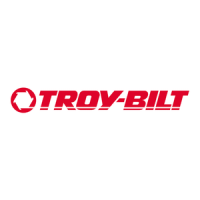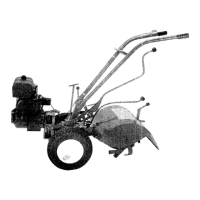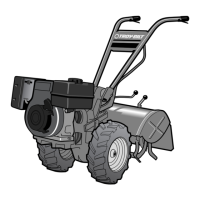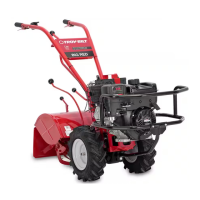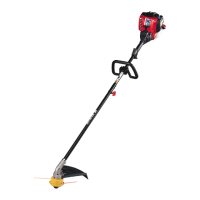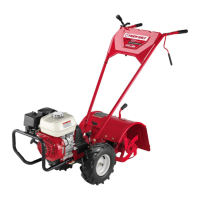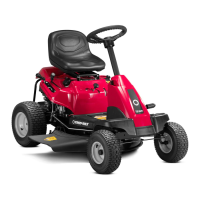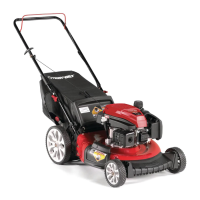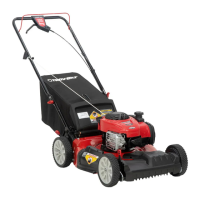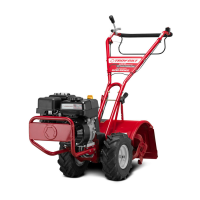84
ADJUSTING THE HANDLEBARS FOR EASY
USAGE
When
snowplowing
or
soil dozing, adjust
the
handlebars
lower
(slightly
less than waist high)
to
give
yourself
more
leverage
to
raise
the
Blade
for
banking, clearing obstables and backing up.
If
you
lower
the
handlebars and find
the
crossbar
interferes
with
your
shifting
into
Re-
verse, as
shown
in
Photo
6/20,
switch
inside rat-
chets
shown
in
Photo
6/21 and
that
should
give
you
a few
more
inches
of
clearance.
If
that
doesn't work,
you
can bend
the
Forward/Re-
verse Lever a
little
by placing a
wood
2x4across
the
hood
and
pushing
down
on
the
lever.
This
will
give you extra clearance and
won't
hurt
the
lever
or
its performance.
When
dozing
and plowing, keep
your
depth
regulator
on
the
tiller
to
protect
the
bottom
of
the
tiller
housing
from
the
ground
during
bank-
ing
operations and
while
clearing obstacles.
(Photo 6/20)
If
lever
hits
handlebar
.
..
(Photo
6/21}-Switch
the
left
and
right
hand
in-
side
ratchets
.with each
other
for
added
clear-
ance.
(Photo 6/22)
If
needed,
bend
lever.
SAFETY NOTE:
Remove
tines
in
gangs
while
snow
dozing
especially.
Icy
drives
are
dangerous
with
revolving
tines.
It's
best
to
remove
when
dozing
dirt
and
stone
too.
DIRT
DOZING
SUGGESTIONS
Your Dozer Blade is
handy
for
lots
of
dirt
moving jobs. In
combination
with
the
Hiller/
Furrower
and tines,
you
can make culverts, fill
ditches, make a
trench
to
bUry cable, clean
out
barns, and
do
light
grading,
to
name a few.
Again,
you'll
get
the
most
work
from
your
.Troy-
Bilt
Tiller
and Dozer Blade if
you
use these
hints
...
and then
carefully
experiment.
First, the Blade
should
be used
for
moving
loose
dirt.
..
it can't
dig
into
unbroken
soil
or
hard packed piles like a big bulldozer.
Thor-
oughly
loosen soil
with
the
tines (before
you
take them
off
for
safety).
Next,
the
soil (or
mulch,
or
manure) is best
moved when it's nearly dry.
If
it's very wet, it can
stick
to
the Blade, and
the
moisture's
extra
weight
means
you
move less
per
pass. Also,
when nearly dry,
you
can spread
the
material
more evenly.
It
doesn't
clump
up.
Don't
try
to take
too
big a bite
from
a pile at
once.
Angle
the
Blade away
from
the
pile
and
start at one edge. Then, spread
the
load evenly,
with
the Blade
straight
ahead.
This
way, when
you
"cut
away" at a pile,
the
pile
breaks itself
up
for
you.
As
for
backfilling,
that
depends
on
how
much
you've
dug
up. Sometimes one
or
two
passes
will
do
it, with
the
blade angled
toward
the
trench. Experimentation
will
help
you
find
the
best way.
(Photo 6/23)
Tine
removal
permits
you
to
raise
the
front
higher,
and
the
blade
banks
easier.
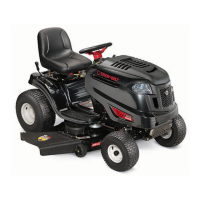
